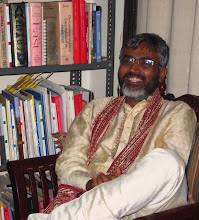ICRC 'crystallizes' late in the game
The International Committee of the Red Cross' decision after years of negotiations to allow Israel's Red Star of David to join the club is a welcome move, but one that should have come much sooner and without partisanship.
Originally published in ISN Security Watch (07/07/06)
The International Committee of the Red Cross' (ICRC) much-belated June decision to admit Israel’s Magen David Adom (Red Star of David) as a full member alongside the Palestinian Red Crescent society has raised so me fundamental questions about the ICRC, its relevance and its mission.
It was only after years of negotiations that a compromise in the form of a rRed cCrystal that could be used by national bodies came about to allow the rRed Star of David full ICRC membership.
While the move is a welcome one, the ICRC's prolonged refusal to admit an organization that had been functioning since 1930 seems to have had more to do with religious conservatism and political calculations than ethical considerations.
Established in 1863, the ICRC claims to be “an impartial, neutral, and independent organization whose exclusively humanitarian mission is to protect the lives and dignity of victims of war and internal violence and to provide them with assistance.”
But when it comes to admitting non-Christian emblems, it seems to have tended toward the partisan and parochial. The single exception was the Red Crescent - which it admitted in 1929. Ostensibly to oppose the "proliferation" of symbols, the ICRC seems to have disregarded the religious sentiments of millions of others.
Though the Red Cross symbol never was intended as a religious one, the refusal of the humanitarian organization to admit other religious motifs has served to betray that intention - a betrayal underscored by its delay in admitting the Red Star of David.
There are a number of reasons why the ICRC needs to abandon its explicitly Christian symbol and adopt the newly devised Red Crystalred crystal as its name and symbol.
The use of the cross, irrespective of the original motives and intentions, does not represent the truly global nature of organization. To be credible and non-partisan, the Committee will first and foremost need to present itself in non-religious terms. Its refusal to admit the Israeli organization was nothing to do with the credibility of Magen David Adom but it was more to do with the inherent but unstated religious prejudice. If an Islamic motif can be included, why not the symbols of other religions and faiths?
Second, the problem with Magen David Adom symbolizes the dilemma facing minorities. Israel’s Arab minority hashave great difficulty in accepting this explicitly Jewish symbol, especially within the context of the Arab-Israeli conflict. The same can be said about non-Muslims in the Middle East as well as the non-Christian population in Europe. Cross, cCrescent, or sStar, these symbols of the national humanitarian groups do not represent the minorities. These humanitarian organizations could not be considered ‘national’ within the context of the societies, which are increasingly becoming multi-cultural and multi-religious. How can the British Red Cross, for example, represent the millions of non-Christians living in that country?
Third, the reservations of the ICRC to accept the symbols of other cultures went to obscenity when it refused to accept alternatives for countries like China, India, and Japan where the Christian cCross represents only a miniscule population. Either these countries had to accept the cross or be excluded from the ICRC. The arguments of proliferation of symbols had to be mitigated by the diversity of the population. The desire of the ICRC to "standardize" its symbols went against the basic grain of tolerance and diversity. If the world’s religions are diverse, why should the ICRC look for a single symbol, especially with a strong Christian connotation?
Lastly, the essence of modern Europe lays in its refusal to allow religious beliefs to dominate public life. As the controversy over Danish cartoons highlighted, for the vast majority of the Europeans, religious sentiments are valid as long as they remain private and individual. The French desire to proscribe explicit religious symbols in schools and the reservations of the Prince Charles to be known as the defender of ‘the’ faith when Britain has other equally valid faiths, symbolize the church-state dilemma and strive for secularism. When these states are no longer tolerating public display of religious symbols, how can their national humanitarian organizations be excluded from this liberal trend.
Irrespective of the original motives, the ICRC has devised a new symbol that is non-religious, non-exclusivist, and non-partisan, but still represents the basic values for which the organization has stood for over a century. Ideally, this could be the symbol for all the national organizations, especially where there are people following different religions. States which abhor official sanctity to religious might find Crystal representing their true character.
Until such a time, either the ICRC must embrace the secular, liberal, and non-religious crystal as its symbol or become embroiled in controversies that serve only to undermine its credibility as a humanitarian organization. The irony is that the very attempt to avoid the use and reliance upon religious symbols has made them all the more significant an issue - an issue that first began with a religious symbol itself, the Christian cross.
The ICRC itself has recognized the irony, understanding, though perhaps a little late in the game, that the emblems are "sometimes wrongly perceived as having religious, cultural, or political connotations" that have "affected respect for the emblems" and "diminished the protection the emblems offer to victims and to humanitarian and medical personnel."

No comments:
Post a Comment